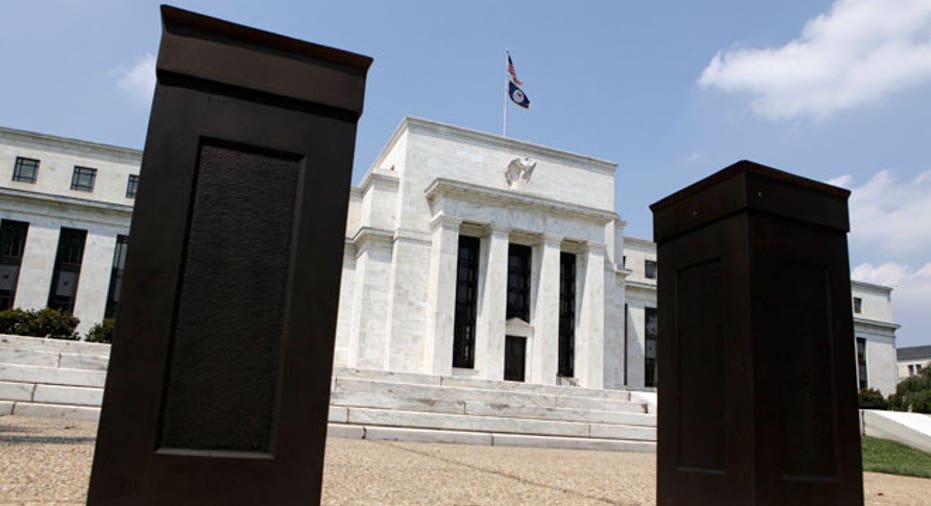Fed Board United on ‘Measured’ QE Cuts, Divided on Rate-Hike Timing

Members of the Federal Reserve’s policy-setting board agreed unanimously that the central bank should continue cutting the pace of asset purchases in ‘measured steps’ as long as the economy continues to grow as expected, according to minutes from the January FOMC meeting.
However, ‘a few’ participants said they could see hiking the Fed’s benchmark interest rate ‘relatively soon,’ while others disagreed.
The members shrugged off a weaker-than-expected December jobs report and said they weren’t yet concerned about turmoil in emerging markets, although they agreed to ‘monitor’ the situation. Overall, the Federal Open Market Committee agreed the economy will probably improve at a ‘moderate’ pace, and eyed ‘unusually bad weather’ in the recent headwinds.
The meeting was former Fed chief Ben Bernanke’s last before handing over the reins to Janet Yellen.
“Committee members saw the information received over the intermeeting period as indicating that growth in economic activity had picked up in recent quarters,” the minutes stated.
Consequently, the FOMC voted to continue reducing the Fed’s monthly bond purchases by $10 billion per month, maintaining a course set in December when the Fed initially announced plans to begin gradually tapering its quantitative easing program.
The Fed now purchases $65 billion in Treasuries and mortgage-backed securities each month as part of its long-running stimulus measures, down from the program’s original $85-billion-a-month amount.
Fed policy makers have repeatedly emphasized the flexibility of the tapering program, saying the reduction in purchases can be adjusted to reflect the direction of economic data as it is released.
The weak December jobs report combined with other mixed data and the turmoil in emerging markets had some analysts speculating that the Fed might delay tapering for a month.
The Fed pressed on, however.
“Overall, labor market indicators appeared consistent with a gradual ongoing improvement in labor market conditions,” the minutes FOMC state, echoing the Fed’s broader expressed sentiment that the U.S. economy continues to slowly heal.
Elsewhere in the economy, the Fed noted that manufacturing production increased at a “robust pace” in the fourth quarter, experiencing broad-based gains across multiple industries. In addition, real personal consumption expenditures rose at a faster pace in October and November than in the third quarter. And activity in the key housing sector ticked higher despite an increase in mortgage rates in late 2013.
Meanwhile, the inflation rate remained under 1%, well below the Fed’s target rate of 2%, which is a positive for consumers as long as deflation doesn’t set in. Policy makers have said they are keeping a close eye on both ends of the inflation spectrum and expect inflation to move toward the central bank’s target rate later in 2014 or in early 2015.
The Fed has been transition away from its past focus on labor statistics – especially the headline unemployment rate – and instead relying more on a broader range of economic indicators to determine future policy moves.
This transition will specifically impact policy related to interest rates, specifically the key fed funds rate (or the overnight rate banks charge one another) which has been held at near zero since December 2008.
The Fed had targeted a 6.5% unemployment rate as an appropriate level for possibly raising interest rates, the second half of its strategy for moving away from the easy-money policies initiated during the financial crisis.
But as the unemployment rate currently has fallen to its current level of 6.6%, the lowest in five years, the Fed has acknowledged that the number may not be the best barometer of the health of the economic recovery.
That’s because the number has plunged not necessarily because of the number of jobs created but rather because hundreds of thousands of people continue to leave the workforce each month, some because they’ve reached retirement age others out of frustration in finding a decent job.
Now the Fed has said it will maintain interest rates at near-zero “well past the time” at which unemployment hits the former target rate of 6.5% and use an array of other indicators to determine when interest rates will be lifted.
The debate over exactly when rates will be raised will play out at future meetings. The FOMC meets again March 18 and 19.